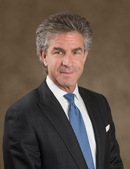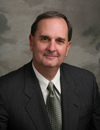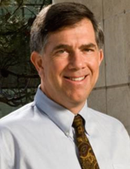08:00 | Conference Registration, Coffee, and Breakfast Pastries |
|
Session Title: The Clinical Translation of Adult Stem Cells -- Challenges and Opportunities |
| |
|
Session Chairman: Allan Wu, M.D. |
| |
09:00 | .png) | Keynote Presentation Engineering Genetic Cures: Genome Editing of Stem Cells
Edward Lanphier, CEO, Sangamo Biosciences Inc, United States of America
Advances in human hematopoietic stem cell (hHSC) isolation, purification and re-engraftment combined with the ability to engineer zinc finger DNA binding protein nucleases (ZFNs) enabling the targeted and permanent modification of any investigator chosen gene sequence have combined to create therapeutic outcomes capable of generating lifelong gene tic cures. This approach is being applied in HIV (targeted disruption of the CCR5 gene in HSCs) and in beta-thalassemia and sickle cell disease (targeted disruption of BCL11A). However, the generality of the ZFN platform permits the target disruption and targeted gene correction of any therapeutically relevant gene thus providing a platform for engineering genetic cures through genome editing of stem cells. |
|
09:30 |  | Keynote Presentation A Roadmap to Point-of-Care Surgical SVF Production and Deployment
Mark Berman, Past President, American Academy of Cosmetic Surgery; Medical Director, California Stem Cell Treatment Center, United States of America
Background on the evolution of the Cell Surgical Network; how and why
it’s appropriate to treat patients now under our empirical investigative
umbrella. |
|
10:00 |  | Keynote Presentation Adipose-derived Stem Cells -- Pathway to the Clinic
Stuart Williams, Director, University of Louisville, United States of America
|
|
10:30 | Coffee Break and Networking |
11:00 | Pluripotent Stem Cells Derived from Human Adipose Tissue: A New Perspective on Regenerative Medicine and Cell Therapy
Gregorio Chazenbalk, Research Associate, Dept of Obstetrics and Gynecology, University of California-Los Angeles, United States of America
In 2010, Multilineage Differentiating Stress Enduring (Muse) cells were introduced to the scientific community, offering potential resolution to the issue of teratoma formation that plagues both embryonic stem (ES) and induced pluripotent (iPS) stem cells. Human Muse cells can be isolated from bone marrow, adipose tissue, dermal fibroblasts and commercially available adipose stem cells (ASCs). Furthermore, Muse cells express classic pluripotency markers and differentiate into cells from the three embryonic germ layers both spontaneously and under media-specific induction. Muse cells self-renew in a controlled manner and do not form teratomas when injected into immune-deficient mice. When transplanted in vivo, Muse cells contribute to tissue generation and repair. Muse cells are inherently resistant to cellular stress, and genetically resilient to DNA damage, supporting their application for the investigation of age-related and degenerative diseases. Moreover, because Muse cells possess a pre-perturbation and an intrinsic propensity for quiescence, they may have the potential to elucidate new avenues of cancer research, specifically with regards to the mechanism behind quiescence, and malignancy. Finally, and perhaps most thrillingly, Muse cells could be harvested for the purposes of creating autologous stem cell banks. Because of their differentiation capacity, Muse cells could be utilized to regenerate any type of tissue and thus treat neurological and immune disorders, and injuries to critical organs such as the heart and brain. Muse cells can be isolated from adipose tissue (Muse-AT cells), for example from lipoaspirate material which is easily accessible, abundant, and, non-invasively extracted from the human body for both medical and cosmetic purposes. Hundreds of millions of adipose cells can be extracted from a mere 1-2 liters of tissue, enhancing the number of extractable Muse-AT cells.
|
11:20 | The Role of Nitric Oxide in Regenerative Medicine
Nathan Bryan, Professor, Baylor College of Medicine, United States of America
Nitric oxide (NO) is a ubiquitous cell signaling molecule responsible for a host of physiological events, including regulation of blood pressure, neurotransmission and host defense. Most recently NO has been identified as the requisite signal for stem cell mobilization and differentiation. The presentation will discuss how NO is regulated and produced in the body and what leads to endothelial dysfunction and insufficient NO production. New safe and effective therapeutics will be discussed that have been clinically proven to restore and replete NO production in humans. These strategies will enhance stem cell therapies and lead to better outcomes in patients. |
11:40 | Bio-engineering Strategies to Augment the Clinical Efficacy of Cell-based Therapies
Oren Levy, Instructor of Medicine, Harvard Medical School/Brigham and Women’s Hospital, United States of America
This talk will focus on novel bioengineering strategies aimed at maximizing the impact of stem cell therapies by enhancing the control over cell fate following transplantation. Specifically, approaches to control cell targeting to sites of disease to maximize therapeutic impact will be discussed. These include mRNA cell engineering to enable cell-based delivery of biologics to sites of inflammation, a multi-step screening platform to identify compounds that improve homing of systemically infused cells and a biomaterials-based platform to facilitate active cell-based targeting of therapeutics to sites of cancer. Overall, this talk will highlight the potential of harnessing cutting-edge bioengineering strategies to advance cell-based therapies. |
12:00 | Networking Lunch and Discussions with Exhibitors |
13:00 |  Technology Spotlight: Technology Spotlight:
Lipogems: A Compliant Regenerative Option
Barbara Krutchkoff, Director of Scientific Affairs, Lipogems; CEO, A3Cell
Lipogems is a novel methodology that optimizes the regenerative qualities of adipose tissue. With a 510k cleared device, more than 5,000 clinical cases, 50+ published papers, a stellar scientific board, and strong validations of its benefits compared to SVF, Lipogems provides a significant advancement in the field of autologous regenerative therapies.
|
|
Session Title: Adipose-derived Stromal Vascular Fraction (SVF) -- Deployment in the Clinic |
| |
|
Session Chairman: Mark Berman, M.D. |
| |
13:30 | Adipose Stem Cells in Vasculogenesis and Angiogenesis
Kristin Comella, Chief Scientific Officer, Bioheart, Inc., United States of America
The ready accessibility of adipose stem cells (ASC) make them a feasible and attractive form of autologous cell therapy requiring either no ex vivo expansion or relatively limited expansion. Our team has been working with ASCs for approximately 8 years. We have studied the effects of these cells in multiple indications in both animals and humans. ASCs are known to secrete angiogenic and anti-apoptotic factors which can increase tissue perfusion and limit ischemic tissue damage in several circumstances, including skeletal muscle, myocardial, and cerebral ischemia, as well as in cutaneous wound healing. ASCs may also be effective in orthopedic indications as they possess the potential to differentiate into bone and cartilage. This lecture will present the data that has been collected from thousands of patient treatments and discuss the potential of the cells in future applications. |
13:50 | A Urological Perspective on SVF Utility
Elliot Lander, Medical Director, California Stem Cell Treatment Center, United States of America
Stromal Vascular Fraction SVF containing adult mesenchymal cells and vital growth factors may have excellent utility as a tool in the hands of the clinical urologist. The effective cellular treatment of human erectile dysfunction remains elusive and this lecture will highlight some of the reasons why. Also there will be a discussion of the relevant use of SVF in Peyronies disease and interstitial cystitis. Both of these conditions are well known to have few treatments better than placebo. We will show early data that shows efficacy of SVF in these and other urologic conditions. Data relevant for many other surgical sub-specialties will be discussed especially in terms of the impact of activating cell, using repeat treatments and modifying the numbers of stem cells provided for degenerative conditions. |
14:10 | Culturing and Storage of Adipose-derived Stem Cells
Hee Young Lee, Surgeon, Baroyl Plastic Surgery, Medikan Co., South Korea, Korea South
The only one result from aging mechanisms is decrease of stem cell density. Expansion of cell number would be the most important thing for the success of human anti-aging. I.V. anti-aging stem cell therapy needs astronomic numbers of cells because they would go every location having problem. So, rapid and continuous cell number expansion with low expense is necessary. In conventional culture, whole cost of enough stem cell number therapy over 1x10^8 cells every week that conventionally need 100 thousands USD would down to 100 USD. We have been used mechanical scraping culture in water proof vessels with aseptic manners. Trypsin-less processes make us to success automatic culture system with costs only several percent of conventional culture. Now our cell culture method is easier than car driving so it could be handled in every home. It is possible with easy monitoring. We expanded the ASCs number 2,000 times much within 18 weeks. It would really make to extend human life span over several decades with low costs. We believe stem cell culture and storing could be possible in patients home within 10 years in several countries, because stem cell culture is now easier than car driving with a small incubator. Our methods would help to reduce whole health care costs that rapidly increasing. |
14:30 | Adipose Derived Stem Cells (SVF) Versus Bone Marrow. Controversy, Myths and Facts
Steven Gitt, Medical Director, North Valley Plastic Surgery & Phoenix Stem Cell Treatment Center, United States of America
There are many impassioned advocates of Lipid and of Bone Marrow Derived Stem Cell deployment. There are many claims made, some of which are fact based, and some of which are not. I will compare and contrast the two techniques and address the strengths and weaknesses of each in a fact based fashion. |
14:50 | Autologous Bone Marrow Concentrate Injection Significantly Reduces Lumbar Discogenic Pain with Correlations to Progenitor Cell Concentrations: Two Year Minimum Follow-up
Ken Pettine, Fellowship Trained Spine Surgeon, Premier Stem Cell Institute, United States of America
Review of prospective non-randomized studies of spine, hip, and knee. Impact of BMC Concentration injections to the site. |
15:10 | Coffee Break and Networking |
15:40 | The First United States Experience with Autologous Intraventricular SVF for Neurodegenerative Disorders: First Year Results of a Phase 1 trial in 18 Patients
Chris Duma, Brain Surgeon Specialist, Hoag Neurosciences Institute, United States of America
Prior to this work, there has been no experience in the United States injecting autologous SVF directly into the human brain. Potential risks and benefits have been unknown. We present our first year results in 18 patients treated with intraventricular SVF.
While double-blind studies are the hallmark of true scientific proof, empirical data should not be ignored as it sets up the basis for further studies. Our patients had no complications from injection, and a phase 3 study for efficacy is pending. The best results were seen in AD and MS, and in patients with multiple injections.
|
16:00 | Intra-Articular Injection of Allogeneic Adipose-derived Mesenchymal Stem Cells Improves Osteoarthritis Progression in a Sheep Model
Wen Wang, Director of Medical Research, Cellular Biomedicine Group Ltd., China
The current study demonstrated that intra-articular injection of allogeneic AD-MSCs could not only block OA progression but also promote eroded cartilage recovery. The main mechanisms were closely related to anti-inflammatory effects and secreting chondrogenic factors of AD-MSCs. |
16:20 | Adipose Derived Regenerative Medicine: An Examination into the Point of Care Model Today
David Angeloni, Chief Science Officer, Millennium Medical Technologies Inc, United States of America
Since the published discovery of adult pluripotent stem cells in adipose in 2002, scientists and physicians alike have been researching new methods of harvesting, isolating, identifying, expanding, and applying these cells in a clinical setting. As such, we have seen an explosion over the past five years with in-clinic use of these cells in an autologous, point of care model with many different companies offering a device or process, and claiming their final product superior. This makes the responsibilities of the physician in the clinic not only as chief medical but science and procurement officer a daunting process to uphold. In this talk, we take an objective stance; informing the listener the background behind the discovery of adipose derived stem cells, relevant publications and information concerning their isolation and characterization, and closing with tangible, science based concepts that should be considered when deploying these cells during a surgical procedure. |
16:50 | Cutting-edge Use of PRP (Platelet Rich Plasma) and Stem Cell Injections for Treatment of Musculoskeletal Conditions in an Office Setting
Joseph Purita, Medical Director of Stem Cell Centers of America, Institute Of Regenerative and Molecular Orthopedics, United States of America
The presentation concerns the cutting edge use of PRP (Platelet Rich
Plasma) and Stem cell injections for treatment of musculoskeletal
conditions in an office setting. We have now expanded our horizons to
also include the use of very small embryonic like stem cells (V cells)
for both musculoskeletal and anti-aging purposes. These cells secrete
telomerase and are considered to be SAFE pluripotent autogenous stem
cells which is one of the holy grails of stem cell therapy. |
17:10 | Superior Proangiogenic Characteristics of Human Neonatal Thymus Mesenchymal Stem Cells
Ming-Sing Si, Assistant Professor of Cardiac Surgery, Department of Cardiac Surgery, University of Michigan, United States of America
Newborns with congenital heart disease who undergo cardiac surgery already have or are at risk of developing conditions related to inadequate myocardial perfusion. We have recently discovered that MSCs isolated from discarded thymus tissue from neonates undergoing cardiac surgery are proangiogenic. The objective here was to assess the therapeutic potential of thymus MSCs (tMSCs) by comparing their proangiogenic characteristics to those of bone derived MSCs. In an initial comparison to adult bone marrow MSCs, we found that tMSCs were superior in promoting EC migration and spheroid sprouting. We then demonstrated that tMSCs were superior in promoting the formation of human neovessels in a subcutaneous implant model in immunodeficient mice. To account for age, we performed a patient-matched in vitro comparison using sternal bone derived MSCs. We found that tMSCs were superior to matched bone MSCs in promoting angiogenesis in vitro. A genome-wide, patient-matched comparison demonstrated a significant increase in SLIT3 expression in tMSCs. The proangiogenic properties of tMSCs were blocked in vitro by soluble ROBO4 and SLIT3 siRNA. These data indicate that discarded thymus tissue is a relevant source of proangiogenic SLIT3 expressing MSCs. Evaluation of tMSCs in cardiovascular disease models is ongoing. We have discovered that MSCs isolated from discarded thymus tissue obtained during neonatal open heart surgery possess potent therapeutic properties, thus making them a candidate for use as cell therapy in these young patients with limited treatment options. |
17:30 | Adipose-Tissue Cryobanking
John Arnone, Chairman & CEO, American CryoStem , United States of America
One of the greatest challenges facing the stem cell industry is the standardization of cellular processing for therapeutic applications. The current regulatory framework concerns regarding the transmission of communicable disease, cellular potency, sterility and identification of cellular samples are key factors. American CryoStem has developed a clinical end to end method to address these issues, within the current regulatory framework, and to process clinical grade mesenchymal stem cell samples from harvested adipose tissue in a laboratory environment. This clinical method ensures that all adipose tissue samples submitted for processing and storage are properly tested (sterility, viability and quantity). Samples are processed, cultured and stored to a physician’s specification to fit each patient’s needs (fat, SVF, cultured cells, and quantity) providing the greatest flexibility for cosmetic or regenerative medicine needs in the future. |
18:00 | Evening Cocktail and Light Dinner Reception |
20:00 | Close of Day 1 of the Conference |

.png)



